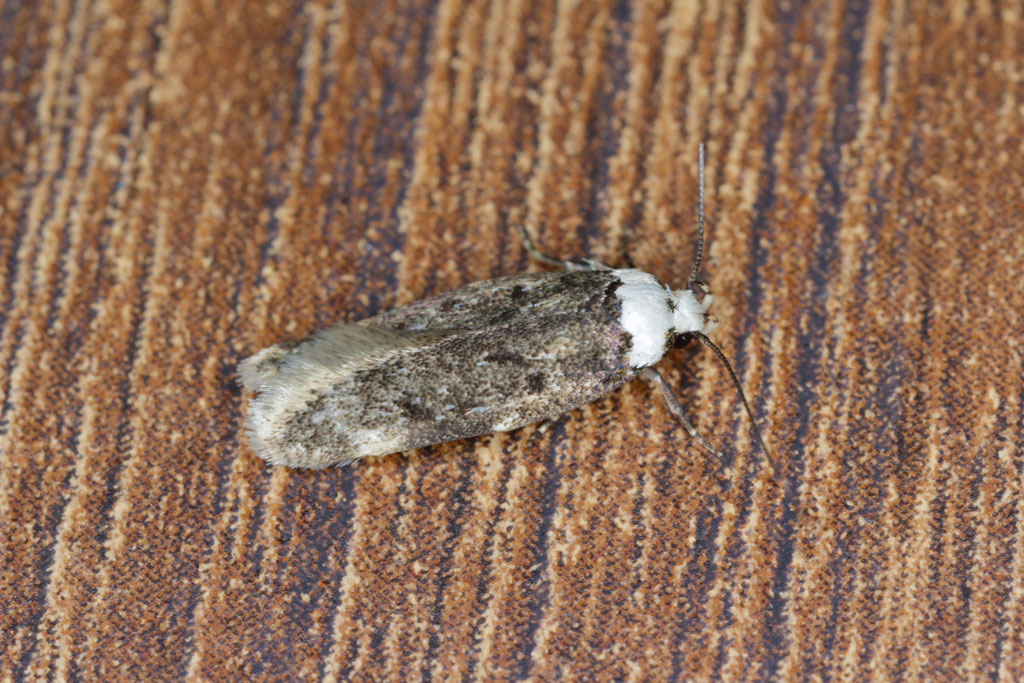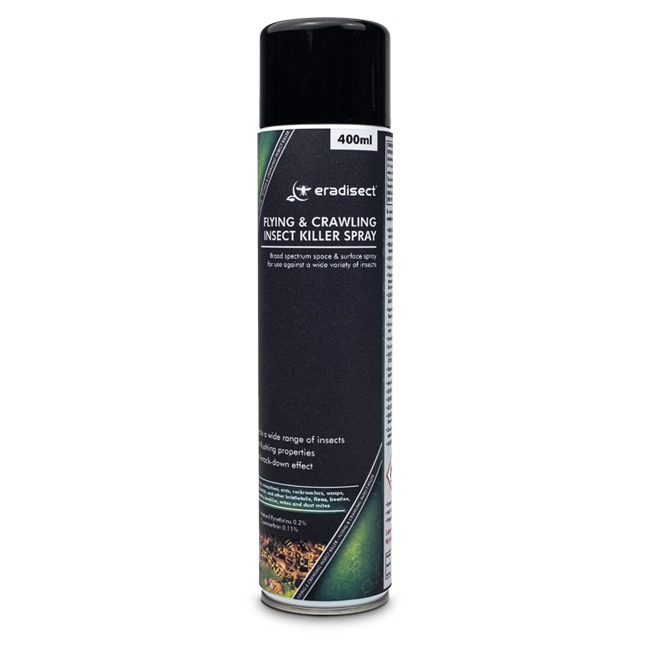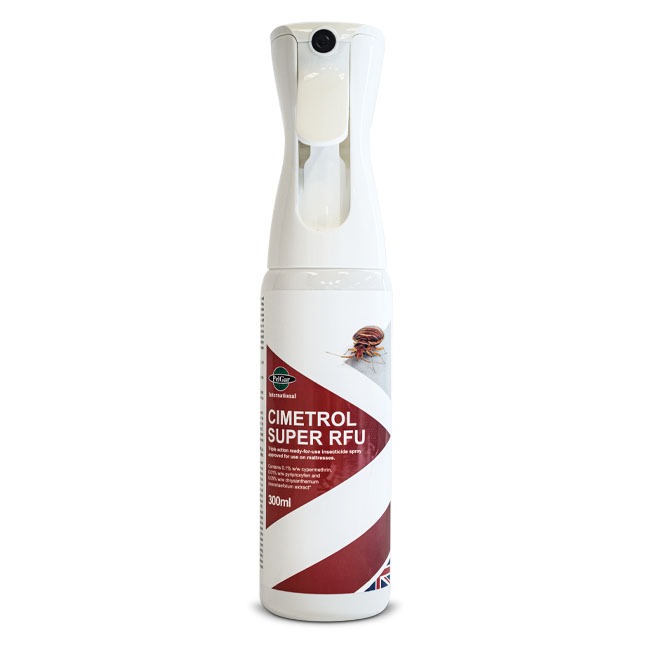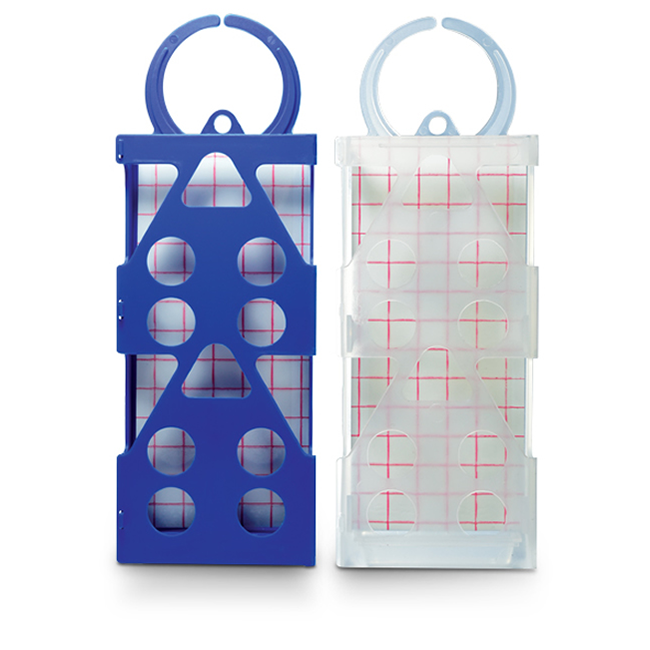White Shouldered House Moth (Endrosis sarcitrella)
 |
The White-Shouldered House Moth is very common in the UK, in both domestic and commercial situations. They can be found in grain stores, animal houses and amongst old rodent baits and are often associated with old birds’ nests. White-shouldered house moth rarely cause damage to textiles and fabrics. However, the larvae can cause damage and contamination to foods and grains.
Identification:
7-9mm in length with an open wingspan of 10– 23mm. Brown in colour with brown mottled wings and a distinctive white head and shoulders. Larvae are small and white with a brown head.
Biology:
Females lay up to 200 eggs on or near the larval food source. Depending on temperature conditions, the eggs hatch into larvae in 7-25 days and begin feeding on the available food source immediately. They form a silk-like tunnel within the food source, feeding at night and hiding by day. The pupae are formed in a silk cocoon and the adults emerge within 1-5 weeks. The adult’s life span is around 2-3 weeks.
Control:
Removal of birds’ nests, and general aggregations of food / organic matter are recommended. Frequent vacuuming of these areas will reduce the breeding potential by physical removal of all stages in the life cycle. Where appropriate, use of a residual insecticide spray will provide control.
Products to control White Shouldered House Moth:
|
Eradisect Flying and Crawling Insect Killer (600ml) |
Cimetrol Super RFU (300ml) |
Eradisect Moth Hanger (pack of 10) |



